Case story
Mechanically Stabilized Earth, Wilmington, DE
United States, Delaware, Wilmington
Case Study Form
|
Application |
Mechanically Stabilized Earth |
Job owner |
Delaware Solid Waste Authority |
|
Location |
Wilmington, DE |
Engineer |
Geosyntec Consultants |
|
Product |
Mirafi® PET1170, Miragrid® 20XT, Miramesh® GR |
Contractor |
Sevenson/Terra Structures |
|
Quantity |
Mirafi® PET1170 (377,466 SY), Miragrid® 20XT (666,560 SY), Miramesh® GR (313,052 SY) |
Date of Installation (m/y) |
June 2007 - May 2010 |
THE CHALLENGE
Cherry Island Landfill, operated by the Delaware Solid Waste Authority (DSWA), has been used for municipal solid waste disposal since 1985. Built on an old dredge disposal site at the confluence of the Delaware and Christina Rivers in Wilmington, DE, the subsurface conditions at the landfill consist of very soft, compressible materials. Cherry Island Landfill was nearing the waste capacity of the facility and the DSWA needed to develop a plan to extend the life of the landfill by 25 years. However, the existing landfill is confined by the Delaware River to the east, the Christina River to the south, Interstate 495 to the west and dredge lagoons to the north, so horizontal land expansion of the facility was not an option. The only option to increase the capacity of the landfill was a vertical expansion. In order to expand vertically, significant ground improvement measures and ground reinforcement techniques would be required.
THE DESIGN
The subsurface conditions at the site consisted of dredge material approximately 40 feet thick, overlaying a 45 foot thick alluvial deposit. Underlying the alluvial deposit is a medium dense to dense residual sand layer. Due to the soft ground, the landfill side slopes could be no steeper than 8 Horizontal to 1 Vertical (8H:1V) without ground improvement and geosynthetic reinforcement techniques. Some of the ground improvement techniques considered for the vertical expansion included deep soil mixing, sand drains and prefabricated vertical drains (PVDs). Ultimately, the most cost effective and construction friendly option was a high strength geosynthetic reinforced berm constructed over PVDs. Due to the soft, compressible dredge and alluvial material, significant settlement was anticipated. Also, due to the massive size of the reinforced earth berm, development of very high pore water pressures in the foundation soils was a concern. Piezometers and other instrumentation devices were included in the design to monitor stability and prevent the the berm from being built too rapidly.
THE CONSTRUCTION
Construction began by installing over 81,000 prefabricated vertical drains, over 6.8 million linear feet. The vertical drains were installed around the perimeter of the landfill in the foundation area of the berm. Construction of the berm on top of the PVDs then began by placing the very high strength reinforcement geotextile with drainage sand. The sand provided quality backfill at the base of the berm and allows the water to drain from the PVDs. The bottom two layers of the reinforcement were extremely important to provide stability to the reinforced berm. These two layers consisted of TenCate Mirafi® PET1170 geotextile. This geotextile was the highest strength geotextile ever manufactured for this type of construction in the United States. The ultimate strength of the woven polyester geotextile was 1,170 kN/m (80,000 lb/ft). The embedment length of the bottom 2 layers of high strength polyester geotextile was 140 feet long, this very long embedment length was require due to the extremely soft subgrade Two additional long embedment lengths of the high strength Mirafi® PET1170 was used at the mid-height of the berm for additional stability. The remainder of the berm was constructed using TenCate Miragrid® 20XT polyester geogrid. Embedment lengths of the Miragrid® 20XT ranged from 20 to 80 feet. The berm was constructed with a face batter of 1 Horizontal to 3 Vertical (1H:3V), 72 degrees from horizontal, so technically it was a wall. The face detail consisted of L-shape wire baskets acting as a form for fill placement and TenCate Miramesh® GR wrapped around the face. Miramesh® GR is a small aperture grid material (aperture size of 2 mm) used as secondary reinforcement and facing wrap for stability and erosion protection. The open nature of Miramesh® allows for fast germination of vegetation through the reinforcement. Native vegetation was used at the site and quickly developed at the face after construction. The berm was constructed to heights of 60 to 70 feet tall, with a total length of approximately 8,700 feet (1.6 miles). The total face area of the berm was approximately 475,000 square feet. Over 2 million cubic yards of fill was required for construction of the berm. The berm also required over 380,000 square yards of Mirafi® PET1170, 670,000 square yards of Miragrid® 20XT and 315,000 square yards of Miramesh® GR.
THE PERFORMANCE
Vertical expansion of the Cherry Island Landfill could not have been accomplished without utilizing high performance geosynthetics. TenCate Geosyntethics was able to manufacture high strength polyester reinforcement with tensile strengths in excess of 80,000 lb/ft to meet the challenging design for this site. The vertical expansion was an innovative design, effectively managing and constructing a massive berm on extremely soft soil. TenCate Mirafi® geosynthetics allowed for a cost effective, easy to construct solution to a very challenging project. This project is one of 5 finalists for ASCE’s 2012 OPAL Award for an Outstanding Civil Engineering Achievement (OCEA).



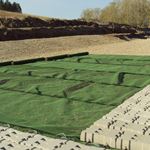
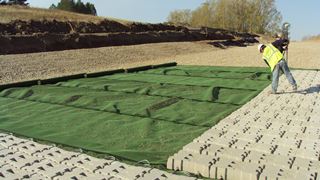
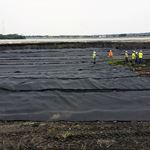
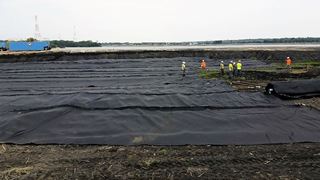
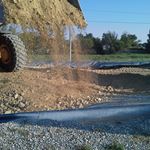
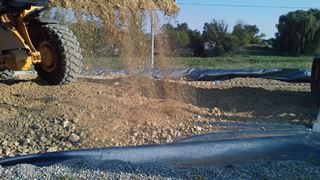
.jpg?w=40&h=40&action=crop)